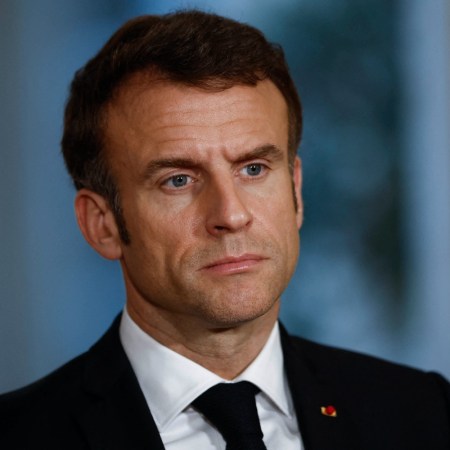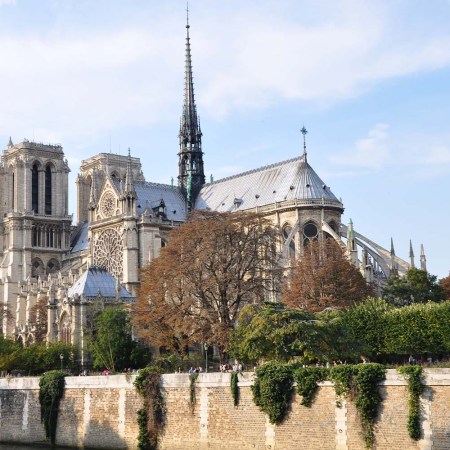Come to Paris later this summer and you’ll discover the city at its finest: hot, languid, and utterly devoid of Parisians, who will have skipped town on their annual holidays. (Imagine New York City over Labor Day weekend — unnaturally, wonderfully calm — except that it lasts an entire month.)
This year, late-summer visitors and the residents stuck in town alongside them will also share something new, and fairly spectacular: the chance to jump into the Bassin de la Villette, in the city’s northeast, for a swim.
This isn’t a bucolic, secluded spot tucked away in a city park: step off the quai de la Loire that borders it and you’re a block away from a long, heavily trafficked road, the avenue de Flandre, beloved of delivery truckers heading north out of the city. At its southern end is an elevatated metro stop where three transportation lines converge. This is the 19th arrondissement: ask Google about it, and three popular ways to complete that particular search are “safety,” “crime,” and “dangereux.”
So, should you really be swimming in a truly urban urban waterway?
Mais oui: following years of study and careful environmental cajoling, city officials have declared the water safe for swimming, with 10-20 “traces” of bacteria per 100 milliliters of water. By contrast, the Gowanus Canal — the New York city waterway very roughly equivalent to the Bassin, but with a tortured history — has 52, which, frankly, seems shockingly low, but perhaps that study didn’t account for battery acid.
Three pools will be installed along the western bank of the Bassin, which links the Canal St-Martin (synonymous with the hipster-dominated neighborhood it gave its name) and far to the north, the Ourcq river. Fun fact: the canals were created in the early 19th century by Napoleonic decree, with the goal of improving the delivery of potable water to the city, and paid for in part by a very French wine tax. Like the canals themselves, construction of the three pools won’t come cheap, with estimates of around $1.5 million.
The city will cover the bill.
Center-city river swimming is just one environment-centric initiative being backed by Paris mayor Anne Hidalgo. Hidalgo has also taken a strong stance against cars (and for pedestrians, loafers and assorted flâneurs) in an effort to improve quality of life while reducing the city’s air pollution, which occasionally challenges European healthy-living standards.
Hidalgo recently led a successful effort to ban autos entirely from the highway along the Seine. Meanwhile, the rue de Rivoli — a major east-west thoroughfare that in its proximity to museums and brand-name shopping is a sort of middle-brow, Parisian Fifth Avenue — will be redesigned to accommodate a two-way bike path. And congested roundabouts, like the one at place de la Bastille, are being reconfigured to offer pedestrians more room to roam. (Lucky for Hidalgo, most of her electorate relies on public transportation; her anti-car initiatives chiefly affect suburbanites.) And finally, until the effort became too expensive, Parisians could use buses and subways for free on days with exceptionally high levels of smog, while vehicular access to the city was limited.
These programs are all based on a common premise: the good of the many trumps the good of the few. Public-works projects favor the many. But the tax hikes that preface them tend to draw the ire of a very vocal — and influential — few.
American mayors have tried to import some of Europe’s more successful enviromental urban-design efforts. Perhaps the most famous is former New York City Mayor Michael Bloomberg’s doomed effort to raise a congestion charge on vehicles: $8 for private cars headed south of 60th Street and $21 for commercial vehicles. Imported from London, where it’s viewed as a largely uncontroversial nuisance, Bloomberg’s congestion charge — announced by the mayor at an Earth Day speech at the American Museum of Natural History — was pilloried and defeated by the New York State Assembly.
Meanwhile, enterprising Americans have worked to redevelop waterways still recovering from over a century of harm; New Yorkers kayak the Gowanus, rechristened as a “SuperFUNd” site, resulting in headlines and Flickr photosets like “My Canoe Ride on the Toxic Gowanus Canal.” But green urbanists are often done in by a multiplicity of competing interests: the car charge was killed by state politicians, not city ones. And while the Gowanus clean-up should continue despite proposed cuts to federal Superfund support, other polluted sites won’t be so lucky.
Imagine the New York analogs to these Parisian initiatives: Broadway reimagined as a bike path stretching from the Battery to the Bronx, a city of green rooftops capable of literally lowering the temperature. An abandoned subway tunnel reborn as New York’s first underground park. A massive swimming pool in the East River that seamlessly cleans and filters the surrounding water.
The ideas are there. The execution, however, leaves much to be desired.
Not that green urbanism doesn’t have its acolytes. Recent successes include Manhattan’s High Line park (inspired by Paris’s Promenade Plantée) and the Citi bike program (inspired by Paris’s Vélib). Crucially, that second example is a telling one: while New York’s bike-share program sports a list of private sponsors (Citi, MasterCard et al.), the €15 million bill in Paris is picked up by City Hall.
The conclusion, then, seems to be that here on American soil, we can have nice things — so long as a bank or major corporate partner sees in it an opportunity to burnish its brand. Which is great, except for the fact that those decisions are made by marketing staffers, rather than voters.
Perhaps one day we’ll be be lucky enough to find a corporate sponsor for another modest effort. The kinds of transformative initiatives that will allow for summer canal swims in Paris, though, are typically the province of government, which remains unparalleled in its ability to do the biggest of big things. Maybe, like with Vélib and the Promenade Plantée, city swimming will make its way to New York (The Pools at JP Morgan Chase, anyone?) Or, we could consider a European model for European ideas: a deeply involved electorate empowering a government with tax money and common goals.
Split among 10 million voters, the Venn diagram of “common goals” might not cover much. But there might be enough room in there for river swimming without the need for a corporate patron.
Do we want it badly enough?
For more travel news, tips and inspo, sign up for InsideHook's weekly travel newsletter, The Journey.





















